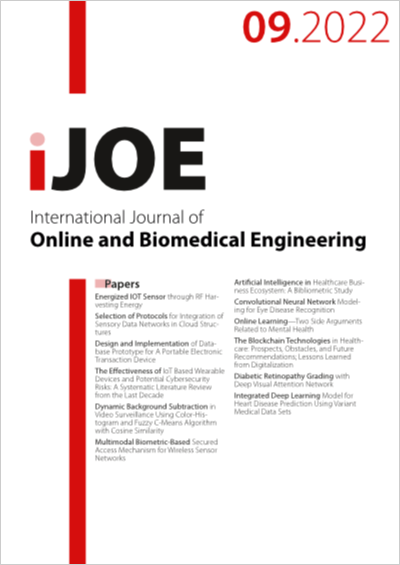Diabetic Retinopathy Grading with Deep Visual Attention Network
DOI:
https://doi.org/10.3991/ijoe.v18i09.30075Keywords:
Diabetic Retinopathy, Diabetic Retinopathy Grading, Deep Learning; Attention Net, CLAHE, Gaussian BlurAbstract
Diabetic Retinopathy is a serious complication arising in diabetes afflicted patients. Its effective treatment depends on early detection, and the course of action varies decisively with the intensity of the affliction. Computer-aided diagnosis helps to detect not only the presence or absence of the disease but also the severity, making it easier for ophthalmologists to construct a treatment plan. Diabetic retinopathy grading is the task of classifying images of the eye's fundus of diabetic patients into 5 different grades ranging from 0-4 based on the severity of the disease. In this work, we propose a deep neural network architecture to address the grading problem. The method utilizes an additional attention layer in the neural network model to capture the spatial relationship between the region of interest in the images during the training process to better discriminate between the different severity stages of the disease. Also, we analyze the impact of different image processing techniques on the classification results. We assessed the performance of our proposed method using a dataset of eye fundus images and obtained a classification accuracy of 89.20% on average. This performance surpasses that reported for other state-of-the-art methods on the same dataset. The effectiveness of the proposed method will facilitate the procedural workflow of identifying severe cases of diabetic retinopathy
Downloads
Published
How to Cite
Issue
Section
License
Copyright (c) 2022 S. Geetha , Mansi Parashar , JS Abhishek, Raj Vishal Turaga , Isah A. Lawal , Seifedine Kadry

This work is licensed under a Creative Commons Attribution 4.0 International License.



